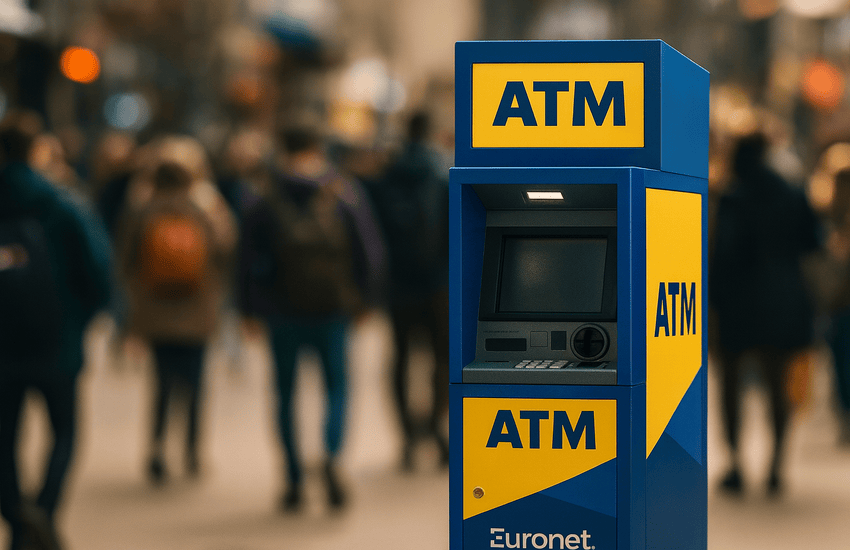Continue Reading With Our 7-Day Free Trial
Euronet’s recent announcement to acquire CoreCard Corporation in a stock-for-stock deal valued at approximately $248 million has sent ripples through the payments industry. Under the terms, CoreCard shareholders will receive between 0.2783 and 0.3142 Euronet shares per share—equivalent to $30 each—depending on Euronet’s closing price, with both boards backing the transaction and a late-2025 close on the horizon. This headline-grabbing move comes on the heels of a blistering first quarter for Euronet, where revenue of $916 million, adjusted operating income of $75 million and adjusted EBITDA of $119 million all set records, driven by double-digit growth across EFT, epay and Money Transfer segments and reaffirming full-year EPS growth guidance of 12–16%. As the payments landscape evolves—shaped by digital transformation, cross-border FX demand and renewed consumer spending—this potential tie-up raises pivotal questions: Can CoreCard’s cloud-native issuing platform and API-first architecture fuel Euronet’s next wave of innovation? Will the combined scale unlock fresh cross-sell, cost and margin synergies? Below, we unpack the four key drivers that could make—or break—this strategic play.
Seamless Technology Integration & Product Innovation
By integrating CoreCard’s modern, API-driven card issuing and processing platform into Euronet’s diversified ecosystem, the combined entity could leapfrog legacy infrastructure constraints and accelerate time-to-market for new payment solutions. CoreCard’s cloud-native architecture, which supports dynamic loyalty programs, real-time analytics and modular deployment, aligns perfectly with Euronet’s two core revenue pillars—high-volume transaction processing and cross-border FX services. Embedding CoreCard’s RESTful APIs within Euronet’s EFT ATM network, epay digital channels and Ria Money Transfer rails would enable instant card issuance, virtual account creation and programmable spend controls for end users, merchants and partners. This technological union could also bolster Euronet’s REN platform, extending support for tokenization, open banking integration and advanced fraud detection across geographies. Moreover, the marriage of CoreCard’s agile dev-ops culture with Euronet’s robust regulatory and compliance framework could result in faster iteration cycles, more secure deployments and a richer feature pipeline—thereby strengthening customer retention and reducing churn. In an industry where rapid innovation is essential to stay competitive against fintech challengers and big-tech entrants, leveraging CoreCard’s engineering expertise could catalyze differentiated offerings such as white-label digital wallets, virtual and physical card programs for niche markets, and omnichannel loyalty engines that drive incremental revenue while enhancing user engagement.
Cross-Sell Opportunities & Client Network Expansion
Euronet’s global footprint—spanning over 350,000 ATMs, 400,000 epay points of sale and a presence in 170 countries—offers an unparalleled distribution network for CoreCard’s solutions, while CoreCard’s mid-market bank and fintech customer base opens doors to new revenue streams for Euronet. By cross-selling CoreCard’s card issuing, loyalty and embedded finance modules to existing EFT and Money Transfer clients, Euronet can deepen client relationships, boost wallet share and drive higher lifetime value. For example, large retail and fuel-retail partners in Europe and Latin America who currently rely on Euronet’s ATM and point-of-sale services could integrate co-branded or private-label card programs powered by CoreCard, generating incremental interchange and fee revenue. Likewise, banks and neobanks using CoreCard for their card portfolios could tap into Euronet’s FX rails and Dandelion wholesale network to offer seamless cross-border payouts and multi-currency accounts to their customers. This symbiotic approach also extends to digital channels: Euronet’s Ria app and epay digital vouchers can bundle CoreCard’s virtual cards into omnichannel loyalty and rewards campaigns, boosting digital-only transaction growth—a segment that already saw 31 % year-over-year expansion in Q1. By unlocking these cross-sell synergies across both physical and digital touchpoints, the merged company stands to capture a larger share of the $2.4 trillion global payments revenue pool projected to grow at 5 % annually, all while diversifying and de-risking its client portfolio.
Cost Efficiencies & Margin Enhancement
Merging two complementary payment platforms offers significant opportunities for cost rationalization and margin improvement. Euronet’s scale in operations—spanning procurement, data centers, compliance, international licensing and customer support—can absorb CoreCard’s infrastructure overhead, reducing per-transaction costs and increasing operating leverage. Consolidation of overlapping functions such as risk management, back-office processing and network connectivity could yield annual run-rate savings on technology maintenance and third-party service contracts. Furthermore, by migrating CoreCard’s platform onto Euronet’s private-cloud or hybrid-cloud infrastructure, the combined entity can optimize resource utilization, eliminate redundant data-store fees and negotiate better volume discounts on telecom and hosting services. These cost efficiencies would flow directly to EBITDA, helping narrow the gap toward the lower end of peers’ average NTM Total Enterprise Value/EBITDA multiple of approximately 12 x, while Euronet currently trades at 5.87 x as of July 30, 2025. Additionally, shared R&D resources can accelerate feature development without incremental headcount, supporting a leaner G&A structure. On the revenue side, unified sales and marketing teams can reduce customer acquisition costs by bundling CoreCard and Euronet products, while joint go-to-market initiatives can amplify brand awareness at a lower incremental expense. Over time, these combined efficiencies are likely to boost consolidated operating margins—Euronet’s LTM TEV/EBITDA multiple of 7.02 x suggests room for margin expansion relative to historical sectors—and strengthen free cash flow yield, which currently stands near 9.9 % on an NTM basis.
Strategic Positioning In The Embedded Finance Ecosystem
As embedded finance continues to reshape the payments landscape by integrating financial services directly into non-financial platforms, the combination of CoreCard’s API toolkit and Euronet’s extensive payments network positions the merged entity as a turnkey partner for merchants, fintechs and platform businesses. CoreCard’s modular “Banking as a Service” capabilities—including real-time provisioning of credit, debit, prepaid and loyalty cards—paired with Euronet’s global FX rails and ATM network could enable clients to offer truly borderless financial experiences. Imagine a ride-hailing app that issues a branded prepaid card via CoreCard, funded by in-app wallets and supported by Euronet’s instant currency conversion and cash-pickup options worldwide. Or a retail chain that embeds personalized installment-pay programs at checkout, orchestrated through CoreCard’s decisioning engine and settled over Euronet’s epay network. Such solutions not only enhance customer engagement but also capture higher-margin, value-added services beyond simple interchange. Further, integrating CoreCard into Euronet’s Dandelion B2B platform—already growing transactions at 33 % year-over-year—could transform it into a comprehensive cross-border finance hub, spanning wholesale FX, card issuance and merchant acquiring under one roof. This strategic play addresses a rapidly expanding market: embedded finance is projected to exceed $3 trillion in transaction volume by 2026, and by combining end-to-end capabilities, Euronet can stake out a leadership position—outpacing fintech pure-plays restricted to narrow niches and legacy banks struggling to modernize.
Key Takeaways
The proposed acquisition of CoreCard by Euronet represents a compelling alignment of technology, scale and market reach. On the positive side, Euronet could unlock substantial cross-sell, technology integration and cost synergies while strengthening its positioning in digital issuance and embedded finance. Conversely, integration risks—including platform migration complexity, cultural alignment and potential execution delays—could weigh on near-term performance. Moreover, the stock-for-stock structure introduces potential dilution concerns should Euronet’s share price fluctuate before closing. From a valuation standpoint, Euronet currently trades at a trailing LTM Total Enterprise Value/Revenue of 1.12 x and TEV/EBITDA of 7.02 x, with a P/E of 14.55 x, metrics that suggest moderate market expectations and room for re‐rating if synergies materialize. Ultimately, while the merger offers a pathway to enhanced innovation and growth, it also presents a double-edged sword, where realization of promised benefits hinges on seamless execution and market acceptance, making the outcome uncertain until the deal is consummated.





